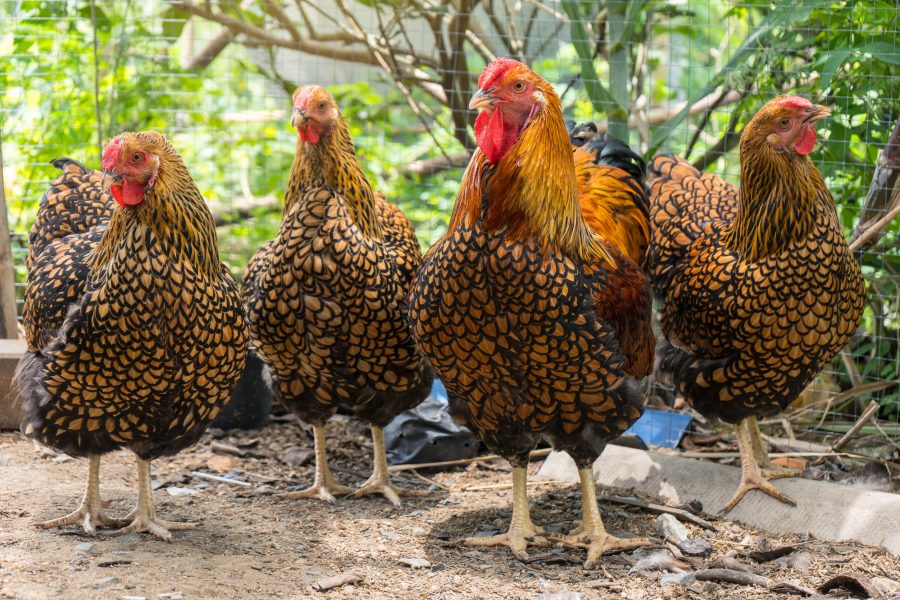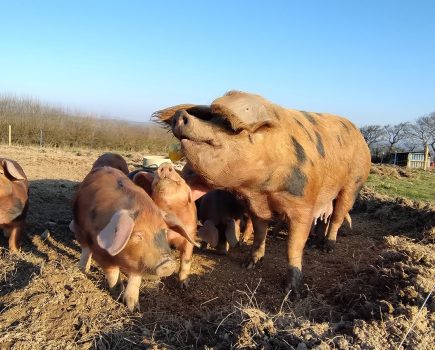In this article extract taken from Practical Poultry in the Spring issue of The Country Smallholder magazine, Paul Donovan investigates cannibalistic feather plucking behaviour, which can be both genetic and environmentally led.
Cannibalism is the term used to describe, where an individual of one species eats an individual of the same species. It has been widely reported in the animal world, and even in humans. When the term “cannibalistic pecking” is applied to poultry, it is not quite that extreme, and typically refers to the habit of one bird pecking various regions of the body of another bird. This can include the feathers, wattle/comb, cloaca (vent), or the feet. It is important, that if the behaviour is spotted, it is nipped in the bud quickly, as if allowed to get out of hand (which it can do), it can spread quickly through the flock. Although the behaviour can cause death if that individual is being picked on enough, it generally results in lowering the birds value due to poor flesh quality, poor feathering condition, and decreased egg production. Let us now look at some of the causes.
Causes of cannibalism
When we try to dissect the cause of cannibalistic pecking, we find that there is not a single cause for it, but a combination of factors contribute to its rise. While many of these may be influenced by environmental factors, some have been shown to be attributed to genetics, with some breeds prone to the behaviour more than others. It is wrong then, to attribute the behaviour as being an entirely learned behaviour, where one bird copies the actions of another, as it can actually be genetically predisposed. Of course why some breeds are prone to cannibalistic pecking while others not, is an intriguing question, but the complexities involve in trying to unravel that, would require an article in itself. Perhaps that’s one for a later date!
Overcrowding
Possibly one of the biggest factors contributing to cannibalistic pecking, is overcrowding. A large number of hens kept together, creates a perfect environment for individuals to peck one another. Their attention is drawn towards one another, rather than the environment around them, as there is generally no environment as such for them to explore.

Cabbage is a high source of fibre which will keep the crop full, and make the birds feel content
Lack of resources
When keeping hens, it is important to ensure sufficient resources, such as feeders, water, perches and nesting boxes are made available. Hens live in a complex hierocracy system, with each having its place in the flock. Where the lack of resources exist, asserting ones dominance over another can result. If higher ranking birds see off lower ranking individuals because they have preference over a particular feeder, this can be done through pecking. Continual reinforcement, or having to resort to fighting for scant resources, can result in skin injuries, exposing the individual to unwanted attention from other birds.
Environment
Following on from this, if you keep hens is a barren environment with nothing to occupy their time, or stimulate them, they will take frustration out on others around then. The floor should have a layer of suitable material to foster natural behaviour such as foraging, and dustbathing. Enrichment elements should be added, such as suspending a cabbage or two, from the ceiling for the birds to peck at. Cabbage is a high source of fibre which will keep the crop full, and make the birds feel content. They will be less likely to peck one another as a consequence. I know a few poultry keepers who place buckets in the coop. This is a great way of giving the birds somewhere to explore, and escape from one another. Hanging some tin cans, or shiny objects from the roof is also another way of drawing inquisitiveness away from one another. The more “activities” you can occupy the hens with, the less inclined they are to take boredom out on one another, and cannibalistic pecking develop.
This article extract was taken from the Spring edition of The Country Smallholder. To read the article in full you can buy the issue here.
To receive regular copies of The Country Smallholder magazine featuring more articles like this, subscribe here.
For FREE updates from the world of smallholding, sign up for The Country Smallholder newsletter here.








